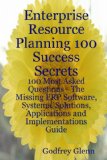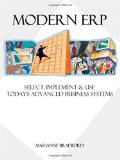Andrew Karasev
While in 1990th we saw very fierce fighting between Microsoft Windows and Apple Computer PowerMac for the workstations market, when two systems were practically not compatible and didn’t have plans to understand each other, plus all the blends of Unix/Linux were trying to step in and take workstation market over, the next decade in our opinion will be the decade of coexistence, integration, cross-platform heterogeneous data distribution and querying. Good example would be this – imagine you are freight forwarder and your company has Microsoft Business Solutions Great Plains implemented as accounting and partly distribution application and on the other hand you have Oracle based cargo delivery / tracking system. You do not have to phase out one or the other – you make them coexist: if you need Great Plains user to lookup shipment status – you use heterogeneous query from MS SQL Server (Great Plains) to Oracle via linked server and have instant result set on the screen. Similar heterogeneous query you can have from Oracle side to MS SQL Server. Let’s look at the trends:
• XML – is platform independent way to communicate: transfer inbound/outbound streams of data. This is the sign of future coexistence and it is very simple in reading and understanding by human being
• IT Budget. Evolution versus Revolution: the old days of restructuring your company business operation around new computer system are probably over. Nowadays IT budget is pretty limited and corporate management considers IT as regular (not elite) internal services department. So – you, as IT manager or director has limited resources to revolutionize the company, so you follow the step-by-step evolution
• The sunset of proprietary languages. Good example is Great Plains Dexterity – this is the core of recent Microsoft Great Plains, former Great Plains Dynamics. Dexterity had the history of evolution, and now it is using SQL Stored procs to do the majority of database querying and updating, Microsoft plans to phase it slowly out and replace with the future .Net language of choice (not sure which one will win: C# or VB.Net – but this is not important at this moment). In the close future SQL with XML inbound/outbound will be the language of integrations
• The end of heavy custom programming. At least in the US – majority of the project will be outsourced. In the USA we will be mostly dealing with project management and specifications writing, plus physical hardware support. Even if you are dealing with, say Microsoft Business Solutions partner in San Francisco – partner itself will be using either overseas facility or simply contractors over there. When the majority of us will become project managers, thinking about business logic, not the way of realizing it in the code – we will stop heating the opposite platform –no more Microsoft VB.Net programmer hatred toward Java/EJB/J2EE programmer
We are already doing cross platform integrations from Microsoft Business Solutions products: Microsoft CRM, Great Plains to Oracle, DB2, Lotus and other databases, plus Microsoft CRM email messaging through Lotus Domino to begin realize the strategy
Andrew Karasev is Chief Technology Officer in Alba Spectrum Technologies – USA nationwide Great Plains, Microsoft CRM customization company, serving clients in Chicago, California, Texas, Florida, New York, Georgia, Arizona, Minnesota, UK, Australia and having locations in multiple states and internationally ( http://www.albaspectrum.com ), he is CMA, Great Plains Certified Master, Dexterity, SQL, C#.Net, Crystal Reports and Microsoft CRM SDK developer.

